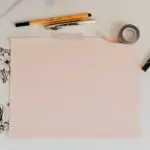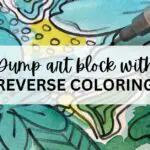Improve your drawing skills so you can rely more on your imagination and less on reference pictures

Is it ever possible to draw from the imagination, without using a reference picture?
This is going to be quite a topic of discussion.
Why is that?
Well, because after much scouring, reading, thinking, and more scouring on the internet on opinions on this matter, my head cannot stop spinning.
It seems like everybody and their grandmother has a very strong opinion on the subject of drawing from the imagination – especially for beginner artists who are just getting started with their drawing journeys.
Sometimes the opinions match; other times, they recommend the complete opposite approach than their colleagues.
Learn to draw first! Then draw from the imagination!
Draw what you see in your head. Then, learn to draw!
and the best one I have heard….
It’s a talent thing. If you don’t got it, you don’t got it.
well… thanks for nothing.
Needless to say, this question is sort of a hot-button topic in the art community, with lots of schools of thought thrown in.
So I want to take a step away from all these opinions and take a stab at this question myself – and from one artist to another, I want to give you my best opinion on the matter and steps you can use to improve your imagination drawing skills.
whew, ok here goes…
How to Draw from the Imagination…
for beginners…
who aren’t good at drawing things to begin with….
here is what I did.
At a very young age, I looked at the world a bit differently than say, my younger brother or mom. When I looked at an object, I saw it’s general shape.
A pencil looked like a cylinder with a cone on top.
An ice cream cone looked like a cone with a circle on top.
A house looked like a rectangle with a triangle on top.
hey, I was 5, give me a break.
But the point is, I was doing something that many many successful artists also naturally tend to do…
…they break down the world around them into shapes, and these shapes make it a bajillion times easier to draw and replicate onto paper or canvas.

Shapes, Shapes, Shapes!
One thing lots of beginners artists struggle with is simplifying what they see. They tend to look at the whole object they are trying to capture and somehow work the details in there somewhere.
Like someone who wants to learn to draw faces.
They see the whole complex face shape. The shadows. The fine lines. The laugh lines. The cascading fountain of hair. The deep brooding eyes.
and immediately, a small sense of overwhelm sets in.
How can I even capture all this complexity?
or better yet, what does this have to do with learning to draw from the imagination, Amanda?
The answer lies in your perspective.
The principles I use to draw from a reference, I also use to draw from my imagination when I am slumped on the couch wanting to draw something cool and quick.
which leads me to my next point…
Drawing not a skill you’re born with. Rather, it’s a consequence of good observation.
And this is why I love using references, especially back when I was learning to draw.
Wait, but using references isn’t using your imagination!
You are correct, but hear me out.
See, imagination is that world we create filled with fantastical, weird, cool, awesome things. It can be non-sensical and totally crazy in concept. But it is your imagination, and great things have come from your imagination.
Plus, a really cool thing about imagination is it’s ability to break reality and create new rules.
emphasis on the term rules.
so, wait, what rules is the imagination even breaking?
The rules you’re breaking are the rules you learn from drawing what you actually see in reality, from a reference.
This is my roundabout way of saying, drawing from the imagination is a wonderful form of expression, but in order to get better at it, you first need to understand the rules of drawing so you can break them later with your imagination.
You catching my drift?

Using a reference isn’t such a bad thing….
Let me illustrate this with a quick example.
Let’s say your ultimate goal is to draw a girl’s face from your imagination. You see what she looks like in your head. You can imagine her freckles, her smile, her bright eyes.
My suggestion would be to first grab a picture of a girl (via the interwebs or a willing model – all with consent of course!), sit your butt down with tracing paper and pencil, and observe.
First, pick a feature you want to work on. Let’s say you choose to work on the eyes.
Your model’s eyes have a distinct look about them. What general shape do you see? Are her eyes round? Almond-shaped?
Place your tracing paper on top of the picture and trace the outline of her eye. What does the shape look like?
Repeat this for other features in the drawing and observe the resulting shape.
Wait, so you’re endorsing tracing, Amanda??? Isn’t that cheating?
When you are trying to learn how to draw, it’s not cheating at all. It’s highlighting and forcing you to see shapes in your drawings. This really is the whole point of the exercise. Simplify, simplify, simplify.

Big Shapes First, Details Last
Once you got a general shape down, try adding in the additional details within and around the shape.
In the case of our model’s eye, add the iris, pupil, eyelashes, eye flaps, eyebrows.
(and of course, if you’re having trouble, simply place the tracing paper on top of the photo and discern the general shape)
And once you have done that, you can take a step back and admire your work.
You successfully drew a facial feature, from a reference, and learned some fundamental lessons along the way.
You created the “big” shape first (the shape of the eye) and then added in the smaller details. Whether you know it or not, this is the EXACT progression artists use to draw and paint. They start big and then finish with details last.
So, this makes you a super drawing pro now, right?
Well, you’re not completely out of the woods yet.

Teach your Hands and Mind with Practice
As a wee little artist, I myself used the shape recognition method mentioned above when learning to draw, and I practiced incessantly.
I would draw and redraw the same feature over and over again, ad nauseaum.
But, what ended up happening was, my hands and fingers got used to holding my pencil a certain way, making lines a certain way to create a specific feature, and before long, I was drawing eyes – from memory – without needing a reference.
way to bring it back, Amanda.
My point is this. Just observing shapes does not a great drawer make.
Practice and repetition is involved.

The more you train your eyes and hands to break down a complex object and translate it onto a sketch, the quicker you will see patterns and the better able you will be to draw from memory.
Now, of course, I am simplifying the entire process, but this is to help show you the progression of drawing skills.
As much as I like to draw from my imagination when I first started out, my drawings looked….ahem….disappointing to me.
It felt like no matter what I saw in my head, I could not will my pencil to capture that essence on paper. And it wasn’t until I learned the fundamentals of drawing and simplifying what I see that I really began to master drawing from my imagination.
Some links used below are affiliate links, which means I will earn a small commission at no extra cost to you. If you want to show support for my blog, be sure to click the link! I really appreciate it!
So where can you start learning to draw using the fundamentals?
There are plenty of great books you can start with, including watching Youtube videos and finding great books on Amazon. Seriously, Amazon has a great deal of book selections just dedicated to improving your drawing skills, from faces to inanimate objects.

My personal favorite book I used to learn to draw faces was Secrets to Drawing Realistic Faces by Carrie Stuart Parks. This book walks you through the process of creating super realistic faces and teaches you the fundamentals of facial construction, form, and shadows when pencil drawing. It’s awesome and I highly recommend it!
And I would suggest practicing with reference pictures and Youtube video tutorials. And know that these things do take time to develop. You cannot expect to draw like a pro overnight. Be patient and kind with yourself.
Hell, it took me 20 years to master my skills and draw with grace and ease. It’s just that I learned through practice and observation. I didn’t want to rush through the process. Instead, I just looked at every pencil stroke as a stepping stone towards my goals.
And that, my friends, is how ya do it.
What did you think of my thoughts? Do you agree? Comment below and let me know!


